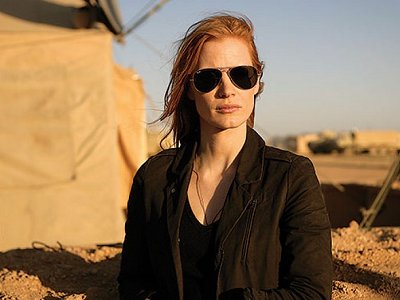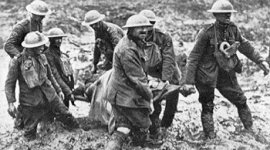
ZERO’S DARKNESS
A gripping film of the hunt for Bin Laden quietly asks us what values we stand for when confronted by those who mean us harm
Among a growing body of films devoted to the aftermath of 9/11, many feel that Kathryn Bigelow’s stand out for their determination to tell stories without the temptation to sermonise. Among movies about the war in Iraq, Hurt Locker studiedly avoided liberal or conservative biases but focused on the intense stresses of troops serving in a chaotic urban setting where soldiers and the indigenous population eye one another with potentially deadly mistrust. Her second film about the 9/11 wars, Zero Dark Thirty, concerns the decade long manhunt for Osama Bin Laden and culminates in a heart-stopping and shockingly plausible depiction of the raid on his compound in Abbottabad in May 2011. Her desire to tell this story with forensic attention to detail has, nonetheless, landed her in trouble.
After a short audio montage of the desperate calls from people trapped in the World Trade Center, the film quickly cuts to the extended torture of a nephew of Khalid Sheikh Mohammed, who masterminded the 9/11 attacks. The project to find and kill Bin Laden is slowly and erratically built up until the CIA is able to identify the chief courier for Bin Laden and follow him to their target. The media storm concerns the depiction of torture. To what extent is torture seen to give leads in the hunt? The evidence is ambiguous, partly because much of the information is still classified. Yet such is the speed and complexity with which the story unfolds, that a moviegoer might be forgiven for thinking it was determinative.
Liberals decry the suggestion that torture was effective and Republican Senator John McCain, a long-time opponent of torture (having been subjected to it himself during the Vietnam War) says all the secret documentation he analysed showed that abuse produced no leads in the hunt for Bin Laden. In December 2012, the acting CIA director, Michael Morell, wrote to agency employees saying: ‘the film creates the strong impression that the enhanced interrogation techniques...were the key to finding Bin Laden. That impression is false.’
Kathryn Bigelow herself has argued that ‘depiction is not endorsement’ and that the use of these techniques by CIA operatives is an accepted part of the post 9/11 story which cannot be glossed over. In this latter point she is surely right. The question is: will future generations refer to the first decade of the twenty-first century as a moment when the United States and some of its allies took leave of their moral compass or the moment when a hardened realism took hold of their foreign policy? For now, under the tenure of Barack Obama and a US which has been spared successful terrorist attacks on its soil for ten years, it would appear to be the former. I would like to think so, but I am not so sure.
Policies can only be sustained in the long term with the consent of the population. It is unlikely that Kathryn Bigelow or the makers of TV’s Homeland intend their portrayal of torture to endorse it in real life (though this may be less true of Joel Surnow, who produced 24) but somehow its presentation has an unsettlingly declaratory effect that this is how things are. There is evidence that successive generations of Americans are more tolerant of the use of torture in the pursuit of evidence that may save lives; on this basis, it is plausible that we may see it emerge again in specific circumstances. The normalisation of it in dramatic art has a subtly corrosive effect. The use of torture by the CIA should not be swept under the carpet, and yet there are risks in portraying it too.
Torture has a profoundly debilitating effect on those who suffer it – and those who perpetrate it. The difficulty the abused have in living a normal life afterwards where the instinct should be to trust others is cruelly undermined by experiencing calculated pain at the hands of other human beings. Those who inflict the pain are more in danger of losing their own souls than saving human lives and any government that expects such practices of its intelligence gatherers should lose the respect on which its existence is predicated.
The ticking bomb argument – that information has to be extracted from someone at lightening speed to prevent an atrocity – is rarely in play. As a consequence, a permissive approach to torture can descend inexorably into frequent use. Many states that employ torture decide it is too restrictive to employ it merely to prevent terrorist attacks and use it in routine criminal work, adopting the same rhetoric that they are trying to prevent the public being hurt, even if it is being used to protect despotic rule.
In one sense, the confusion and debate around torture is a healthy sign that we consider it too important to ignore. Yet there remains an uneasy feeling that western societies are showing signs of abandoning their Judeo-Christian understanding of people being made in the image of God. In this century’s first decade there have been latent signs of a new contempt for the sanctity of human life, not least in the prisoner among us.
POPULAR ARTICLES

Obama's Covert Wars
The use of drones is going to change warfare out of all recognition in the next decades.

Through A Glass Starkly
Images of traumatic incidents caught on mobile phone can be put to remarkable effect.

What Are British Values?
Is there a British identity and if so, what has shaped the values and institutions that form it?


